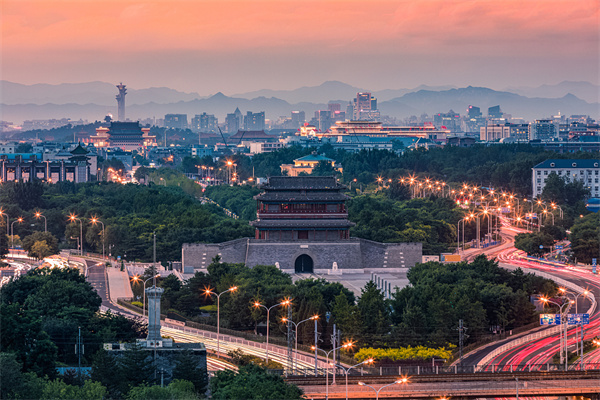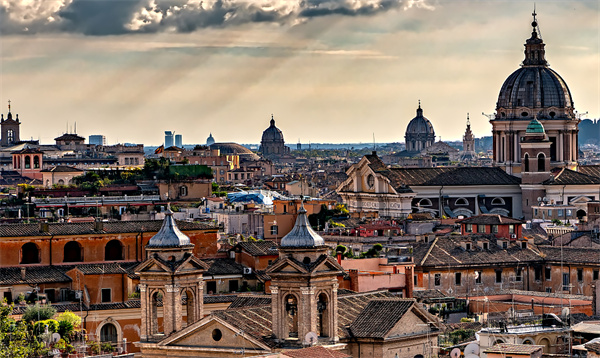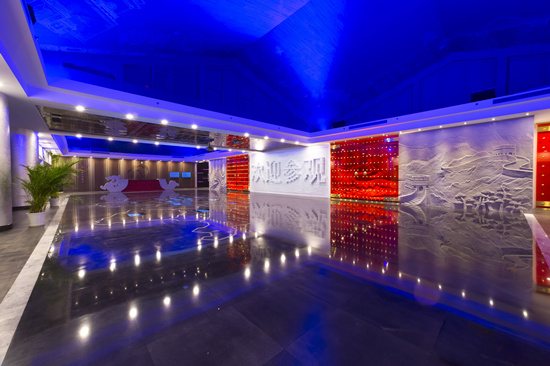Twin souls: Central Axis of Beijing and Historic Centre of Rome

A bird's-eye view of Central Axis of Beijing [Photo/CGTN]
The central axis of Beijing, a north-south line of cultural relics and historical buildings in an old quarter of China's capital, is in the process of application for World Heritage status. Around 43 years ago, the Historic Centre of Rome – which includes some of the major monuments of the Italian capital – was inscribed as a World Heritage site by UNESCO. The two zones, blessed with many historical sites, bear rich deposits of culture and showcase the development progress of the two civilizations. Today, they both still shine with grand scale and completeness.
Central Axis of Beijing
The 7.8-kilometer-long Beijing Central Axis, which stretches from the Drum Tower and Bell Tower in the north to the Yongding Gate in the south, has witnessed China's history since the 13th century.
There are seven World Heritage sites in Beijing, with three of them situated along the central axis: the Forbidden City, the Temple of Heaven and the Jinghang Grand Canal. The ancient axis, also called the "backbone" of Beijing, is in the process of consideration for World Heritage status, reflecting both the concepts of ancient Chinese urban construction and the most important symbols of Chinese culture.
The central axis consists of 14 sites including the Yongding Gate, the former front gate of Beijing's old city wall guarding the outskirts of the capital; the Temple of Heaven, a site that emperors of the Ming (1368-1644) and Qing (1644-1911) dynasties used to worship the heavens and offer prayers for a bountiful harvest; the Forbidden City, the royal residence of the emperors of the Ming and Qing dynasties; Wanning Bridge, a single-arch white marble bridge built in the Yuan Dynasty (1279–1368); and the Drum and Bell Towers, once responsible for the city's timekeeping.
In January 2023, the Beijing Municipal Cultural Heritage Bureau published a plan spanning from 2022 to 2035, laying out a protection plan for the central axis, which covers a heritage zone of about 5.9 square kilometers and a buffer zone of about 45.4 square kilometers.

A bird's-eye view of ancient Rome [Photo/CGTN]
Historic Centre of Rome
Rome was not built in a day. Founded according to legend by Romulus and Remus in 753 BC, Rome was first the center of the Roman Republic, then of the Roman Empire, and in the 4th century, it became the capital of the Christian world. From the 4th century on, ancient Rome was followed by Christian Rome with the Christian city built on top of the ancient city, reusing spaces, buildings and materials.
Since its foundation, Rome has continually been linked with the history of humanity. From Ancient Rome to the Middle Ages, from the Renaissance to the Baroque and Neoclassical periods, it always served as a cultural center in Europe.
The Historic Centre of Rome encompasses the whole historic center of Rome within the city walls at their widest extent in the 17th century, as well as the Basilica of St. Paul Outside the Walls. The major monuments include the Forums, a venue for public meetings, courts of law and gladiatorial combats, and was lined with shops and open-air markets; the Mausoleum of Augustus, the largest funerary monument in the world at the time it was built; the Pantheon, a temple dedicated to twelve gods and to the living Sovran; and Trajan's Column commemorating Roman emperor Trajan's victory in the Dacian Wars.
Both the Central Axis of Beijing and the Historic Centre of Rome represent the souls of their respective cities. The central axis concentrated many cultural and historical relics of Beijing, having witnessed the ebb and flow of the city for centuries and looking forward to more flourishing future as a mega city of the world. Around 9,000 km away from Beijing, the Historic Centre of Rome in Italy records its two-millennium history through its unparalleled architectural languages featuring a wide range of building styles and original developments in urban planning which are harmoniously integrated in the city's complex morphology.

 Responsibilities of the SOCAAC
Responsibilities of the SOCAAC Experiencing Beijing 2023
Experiencing Beijing 2023